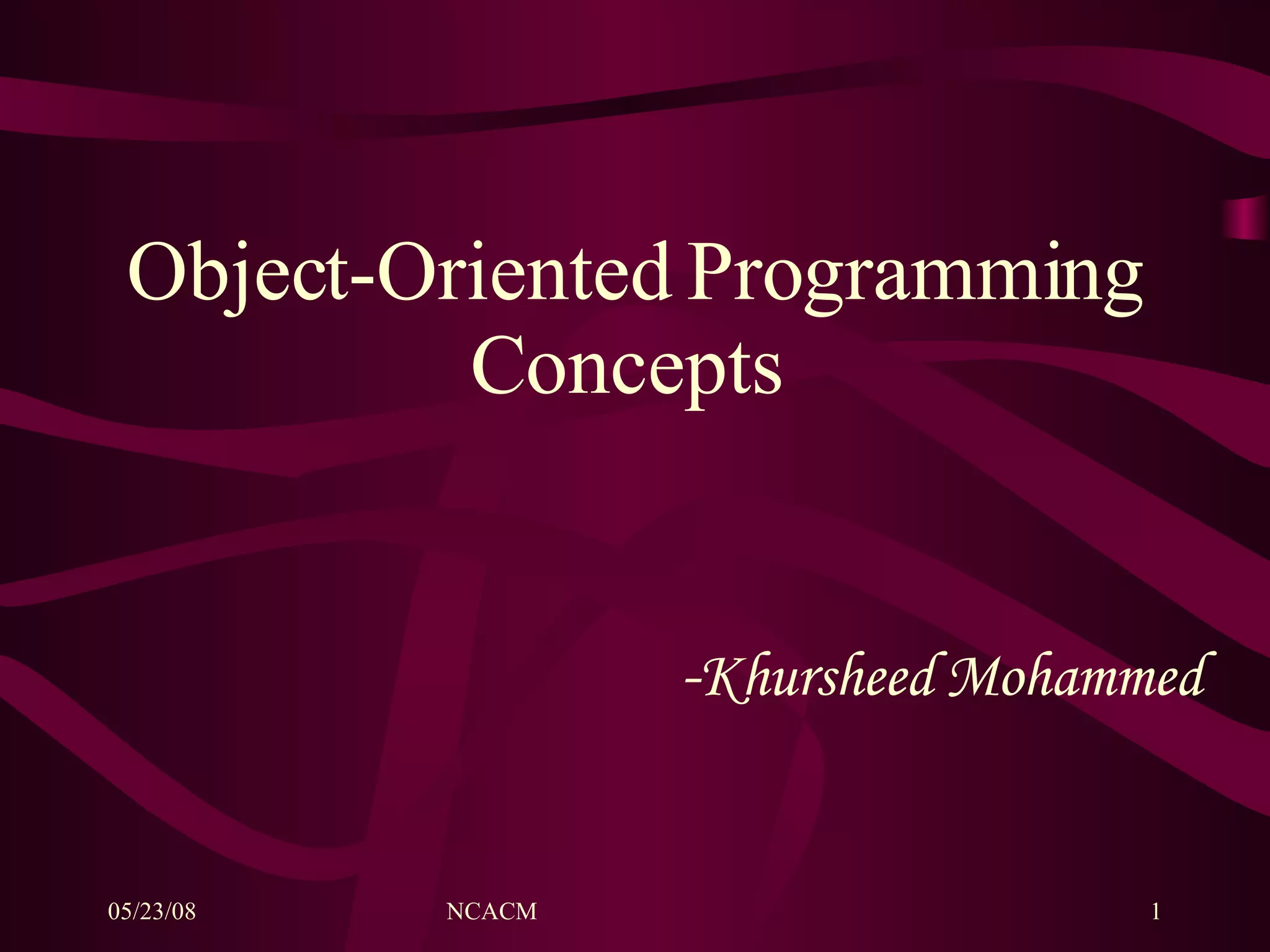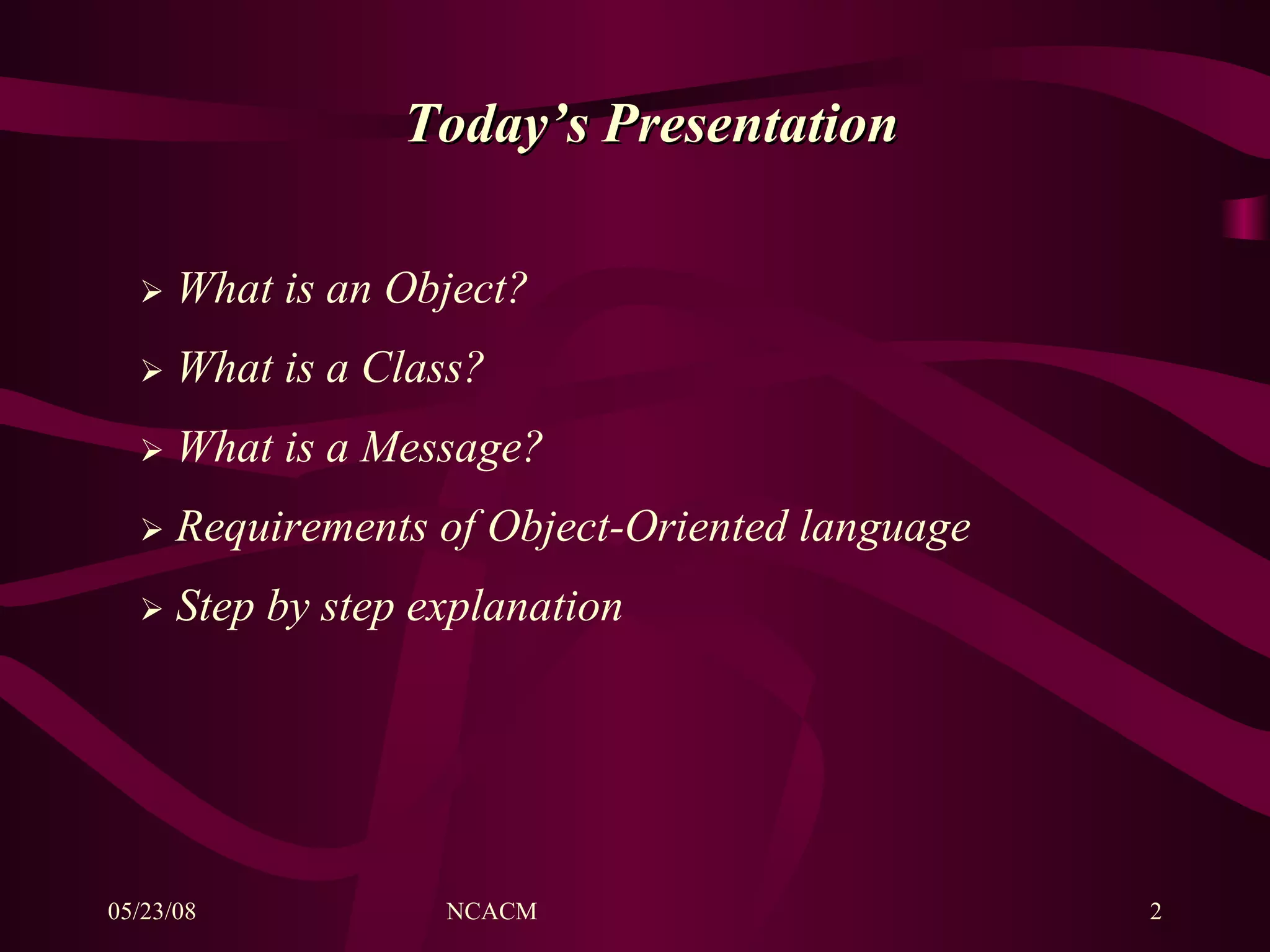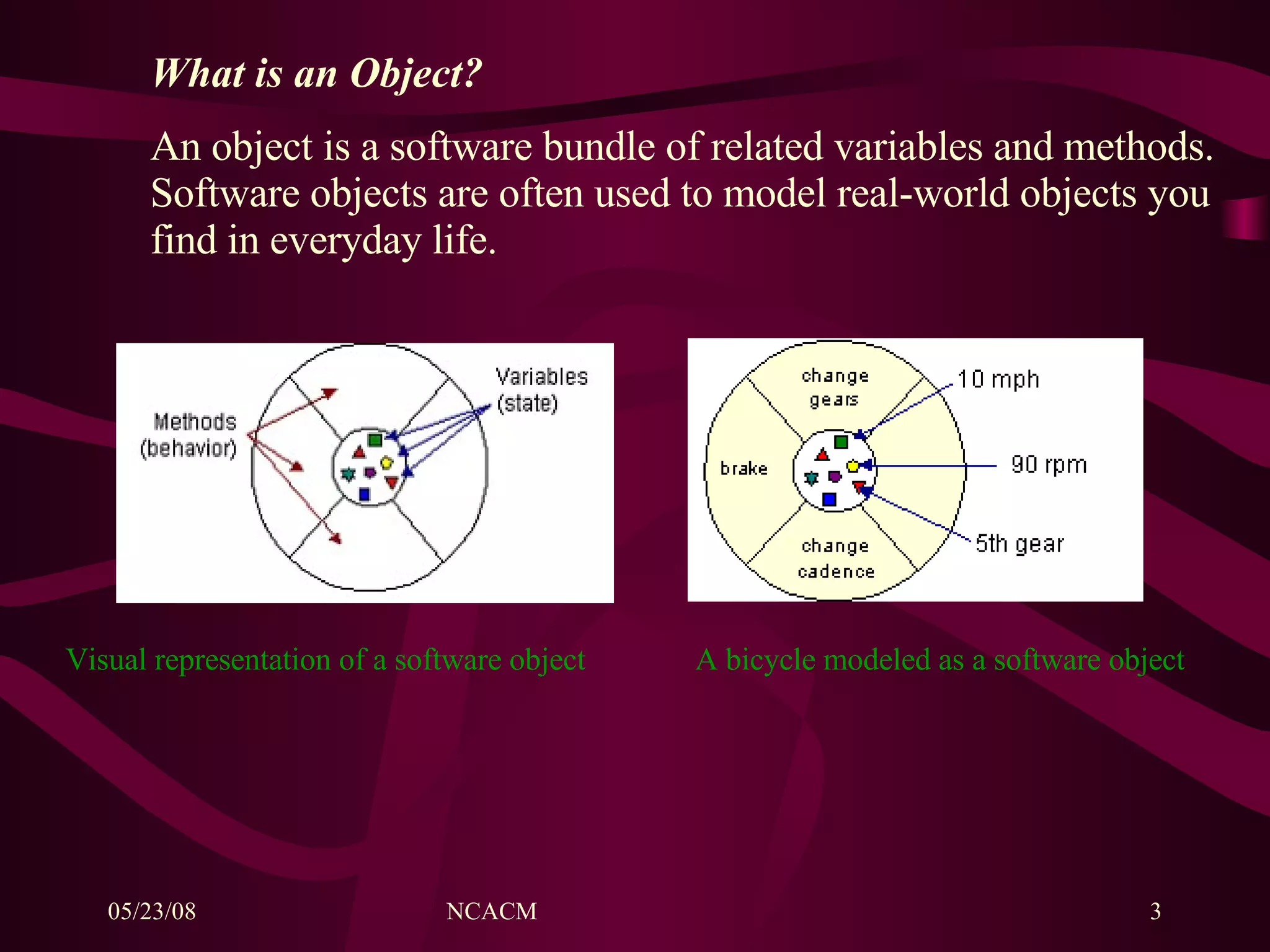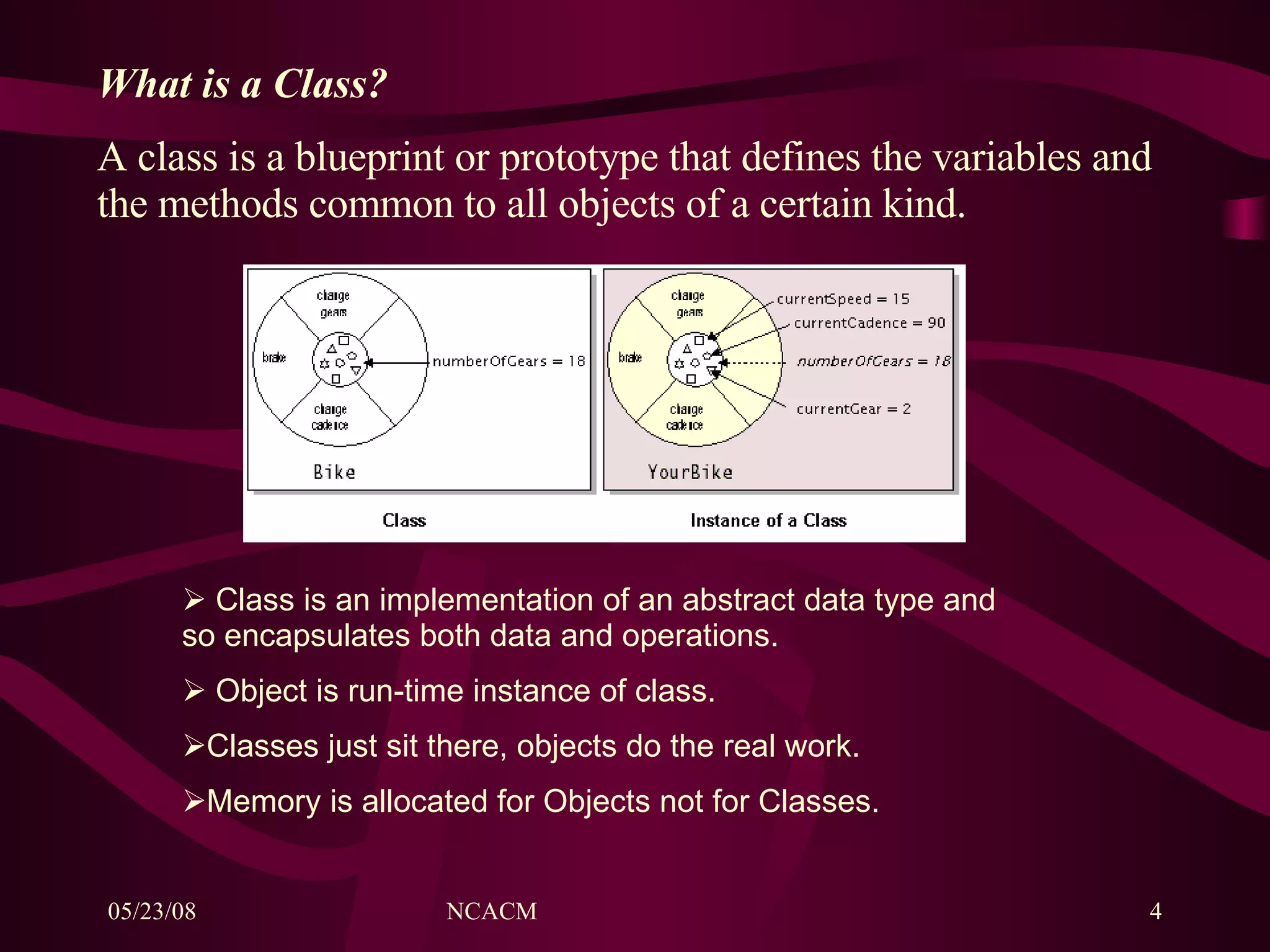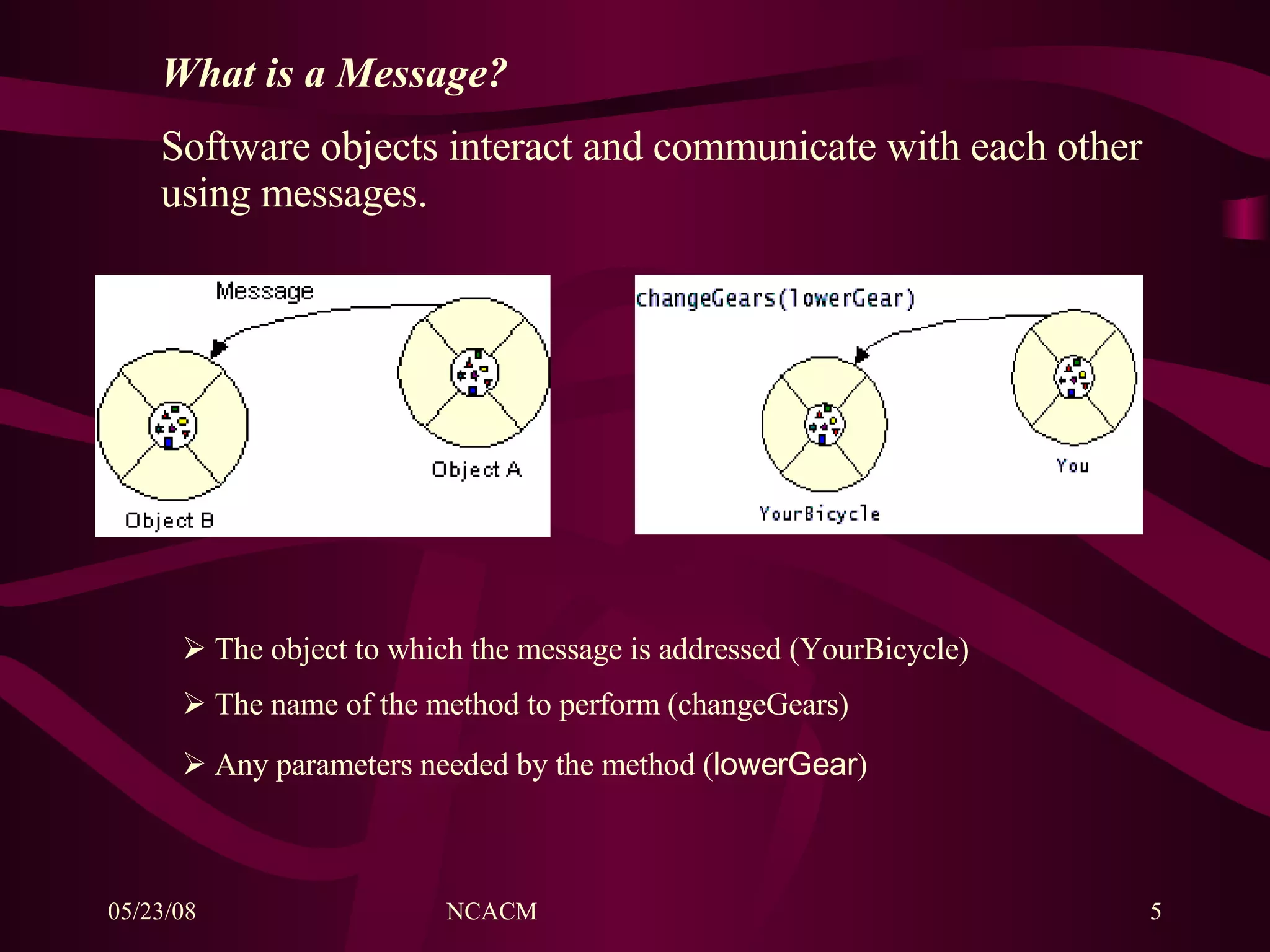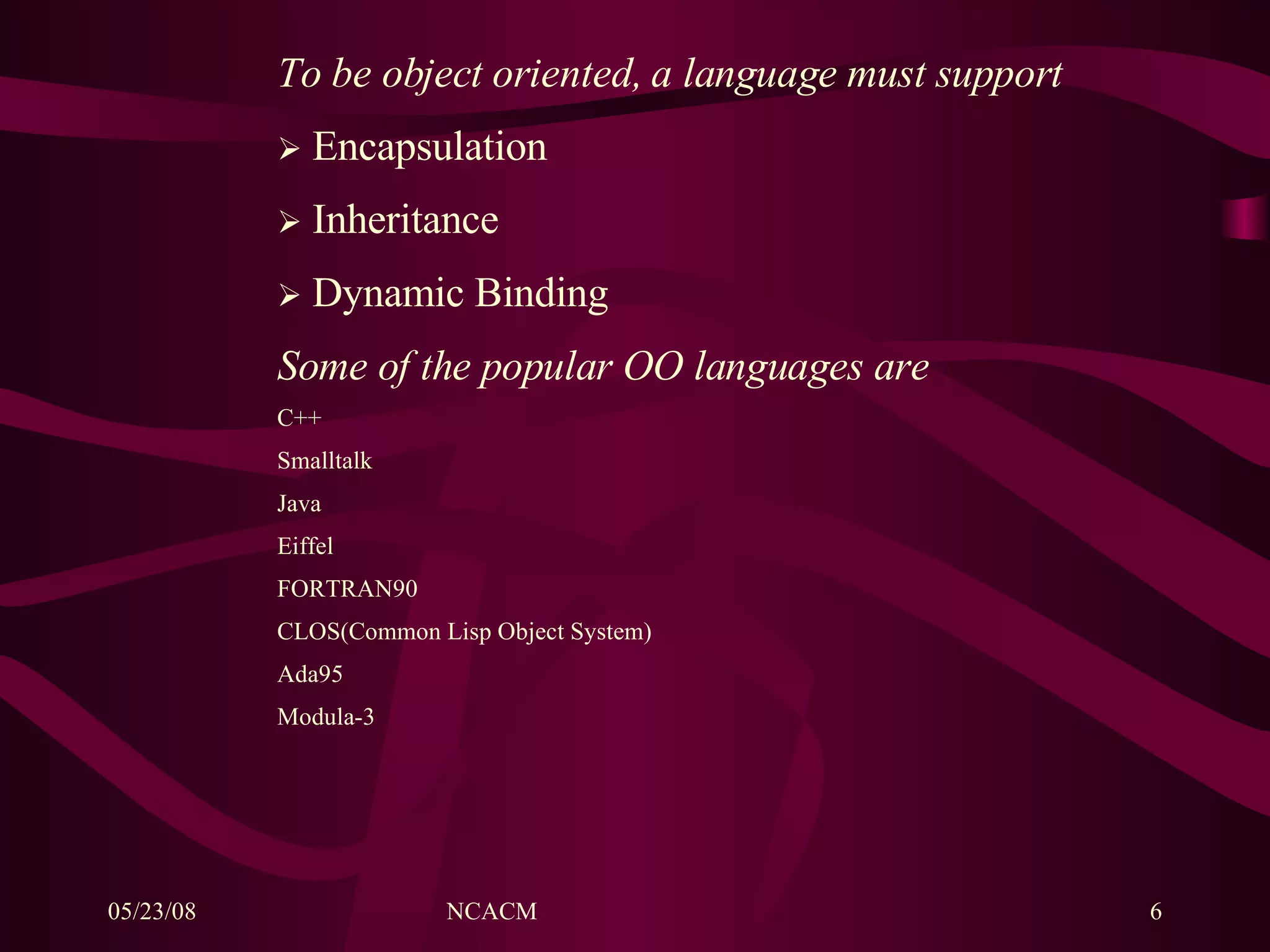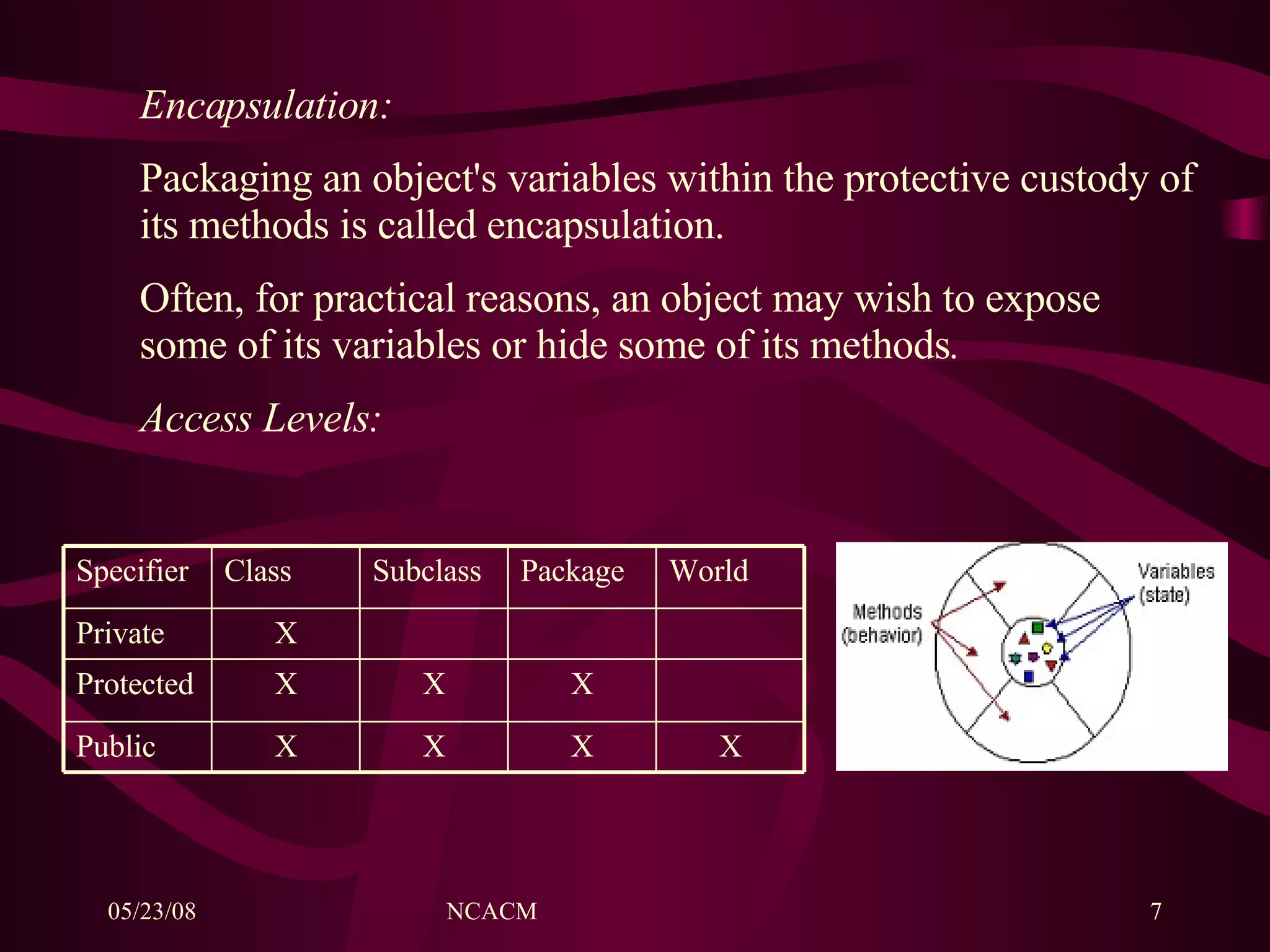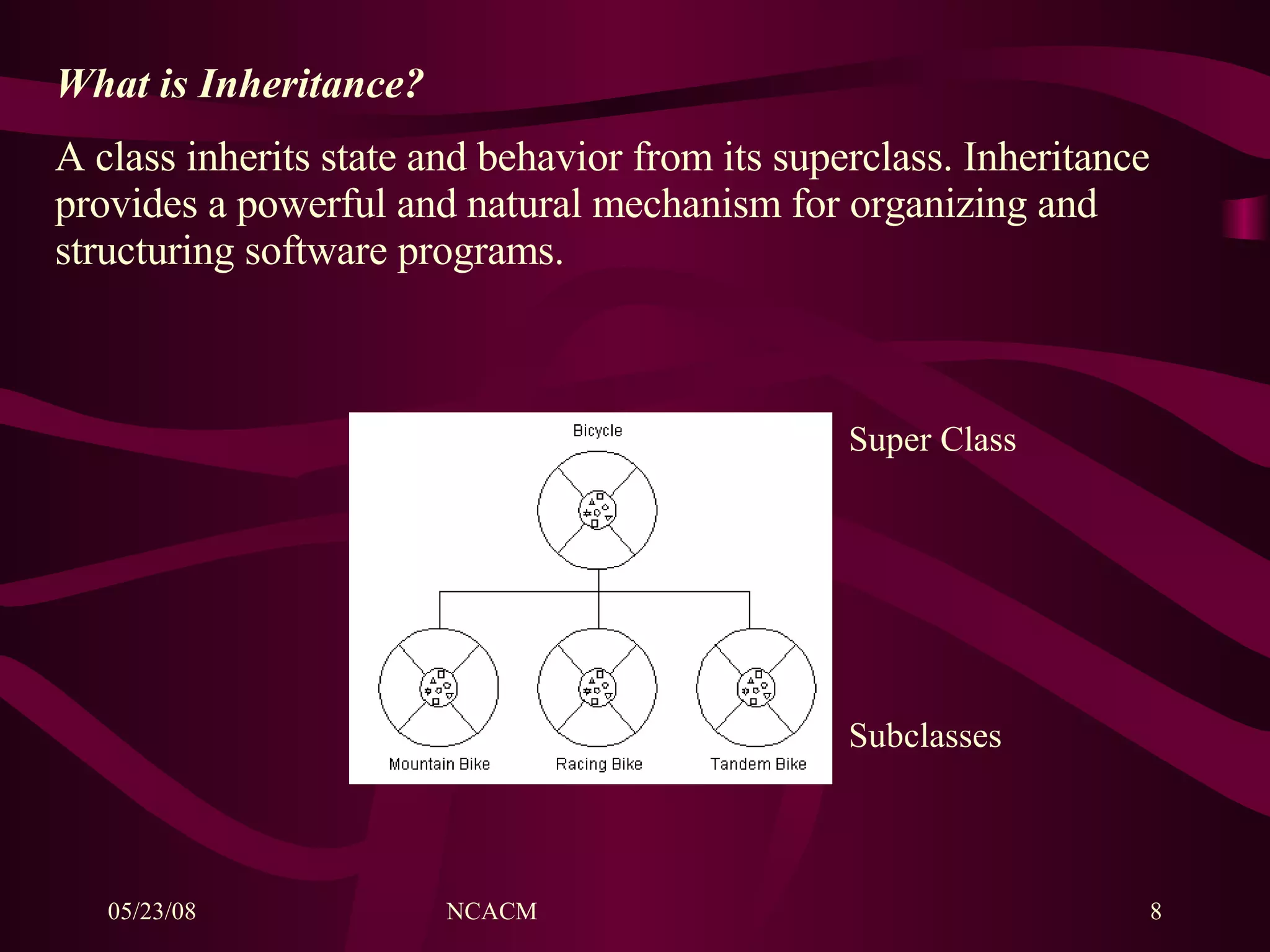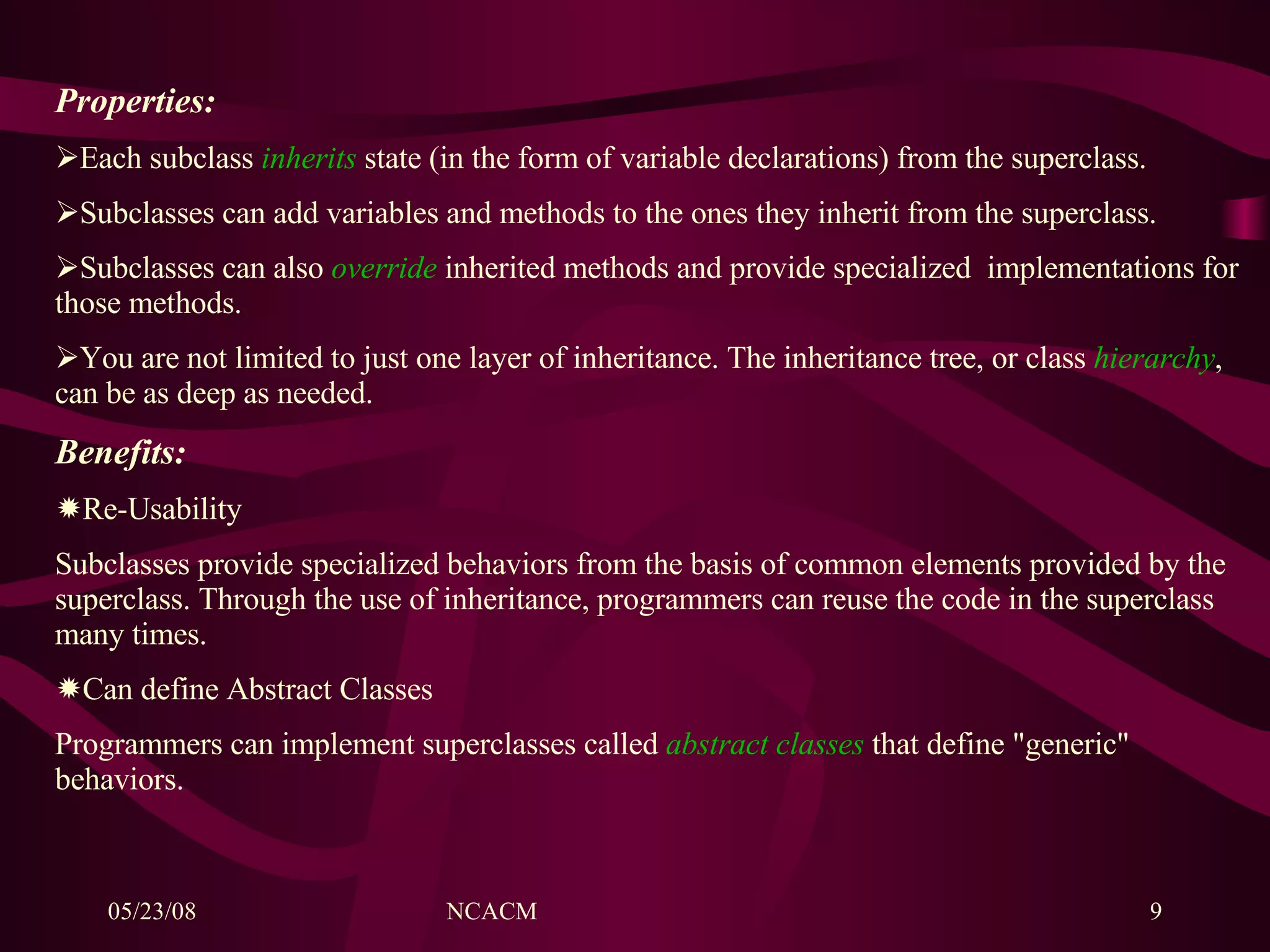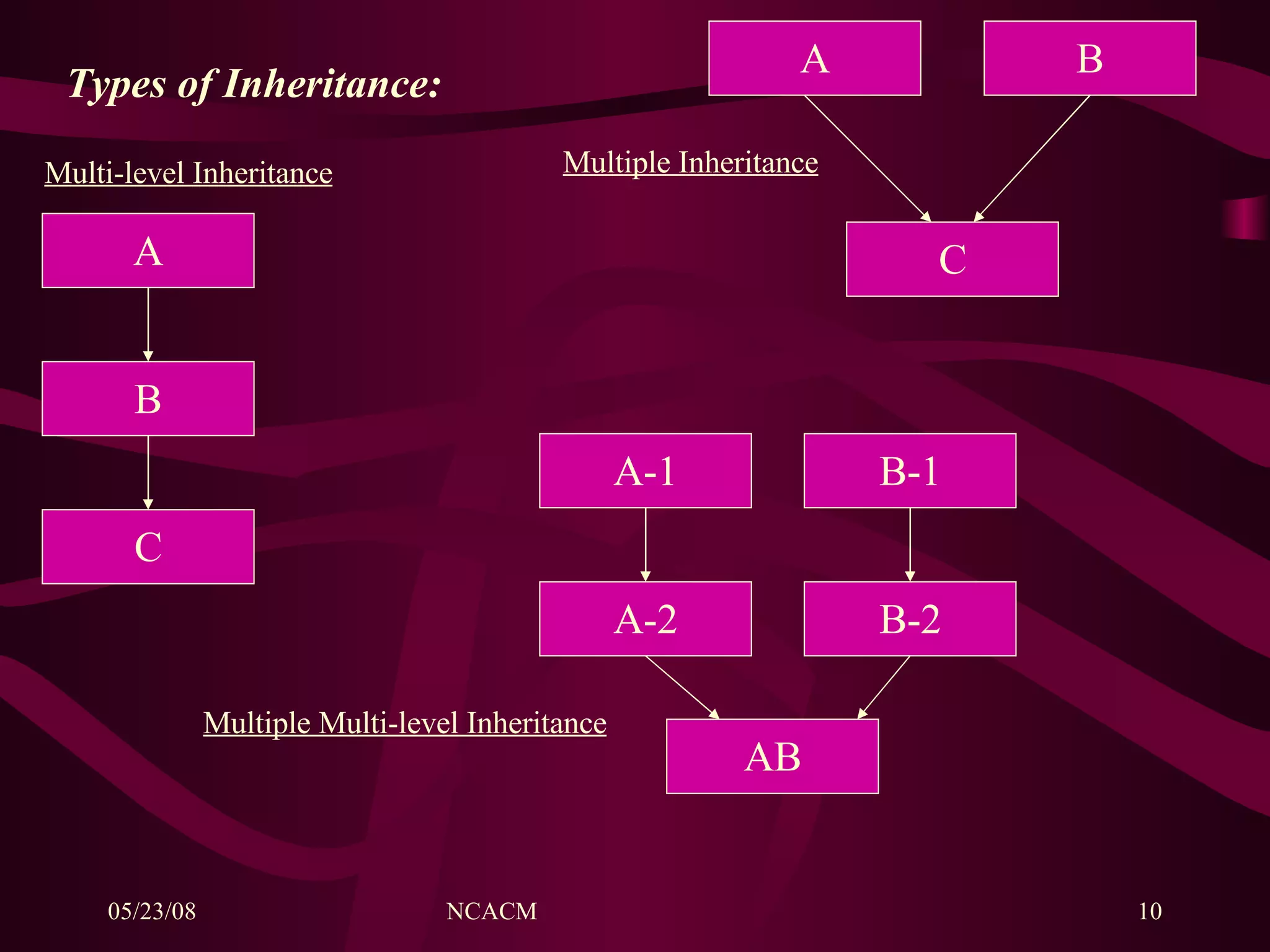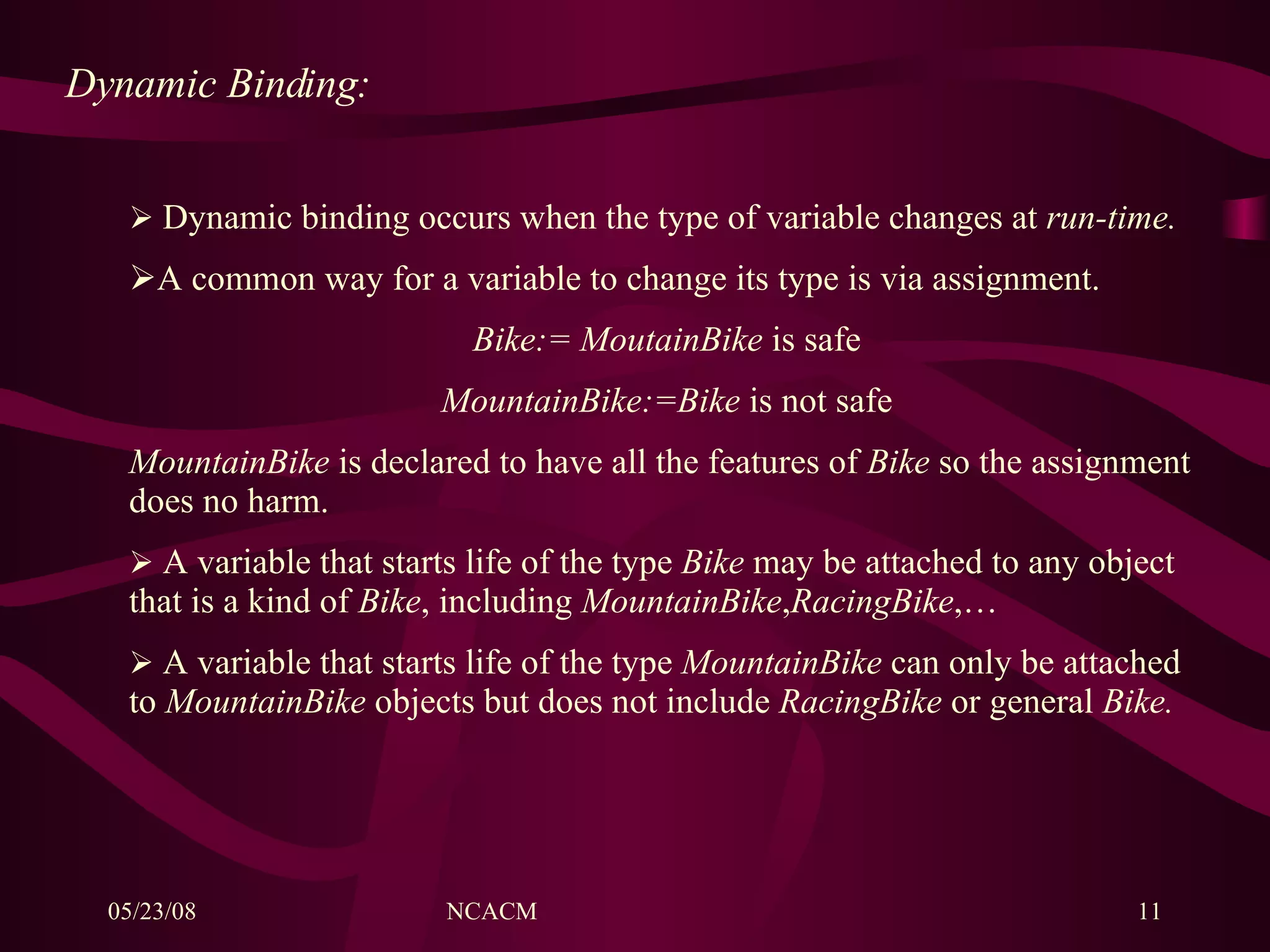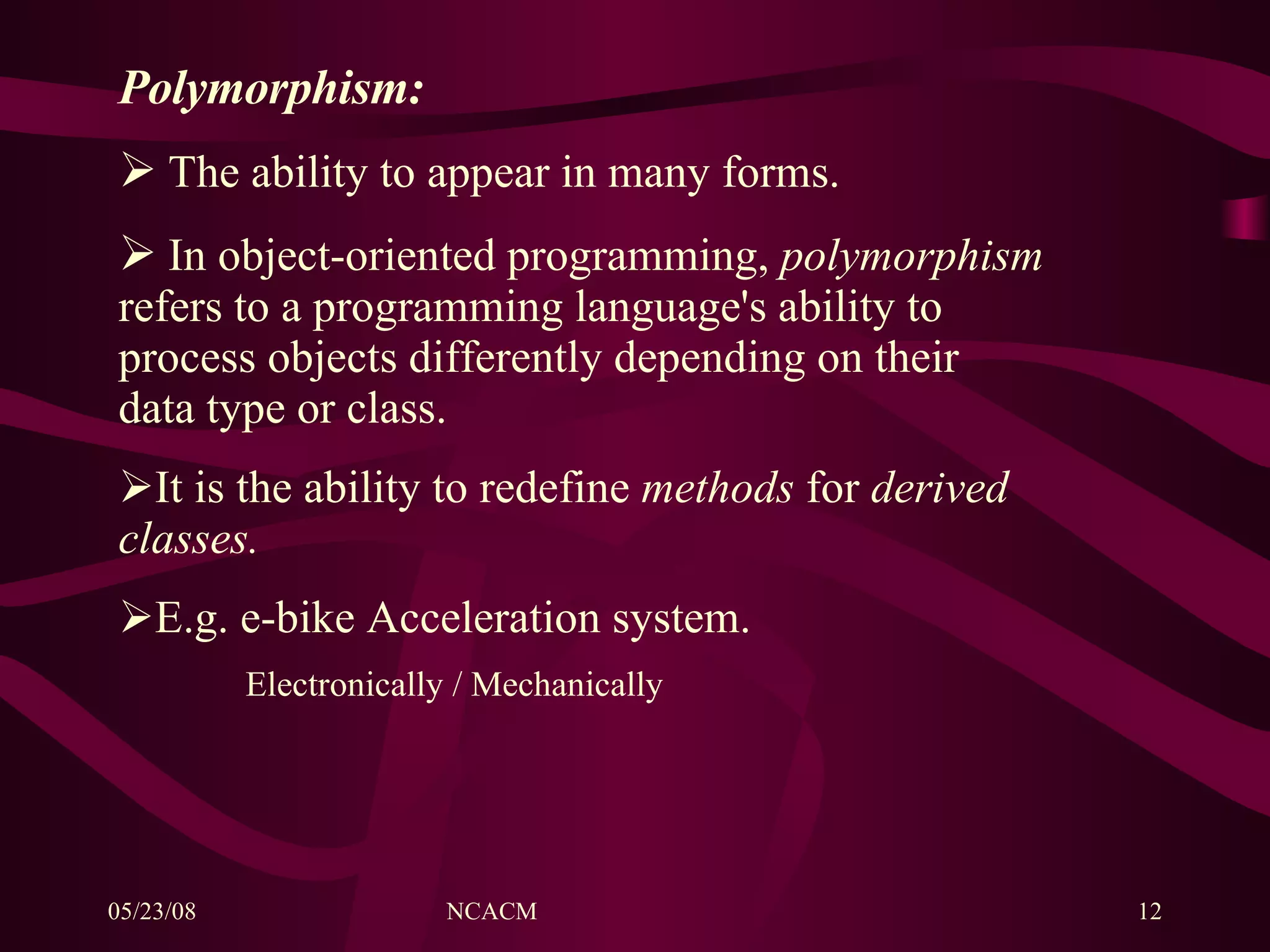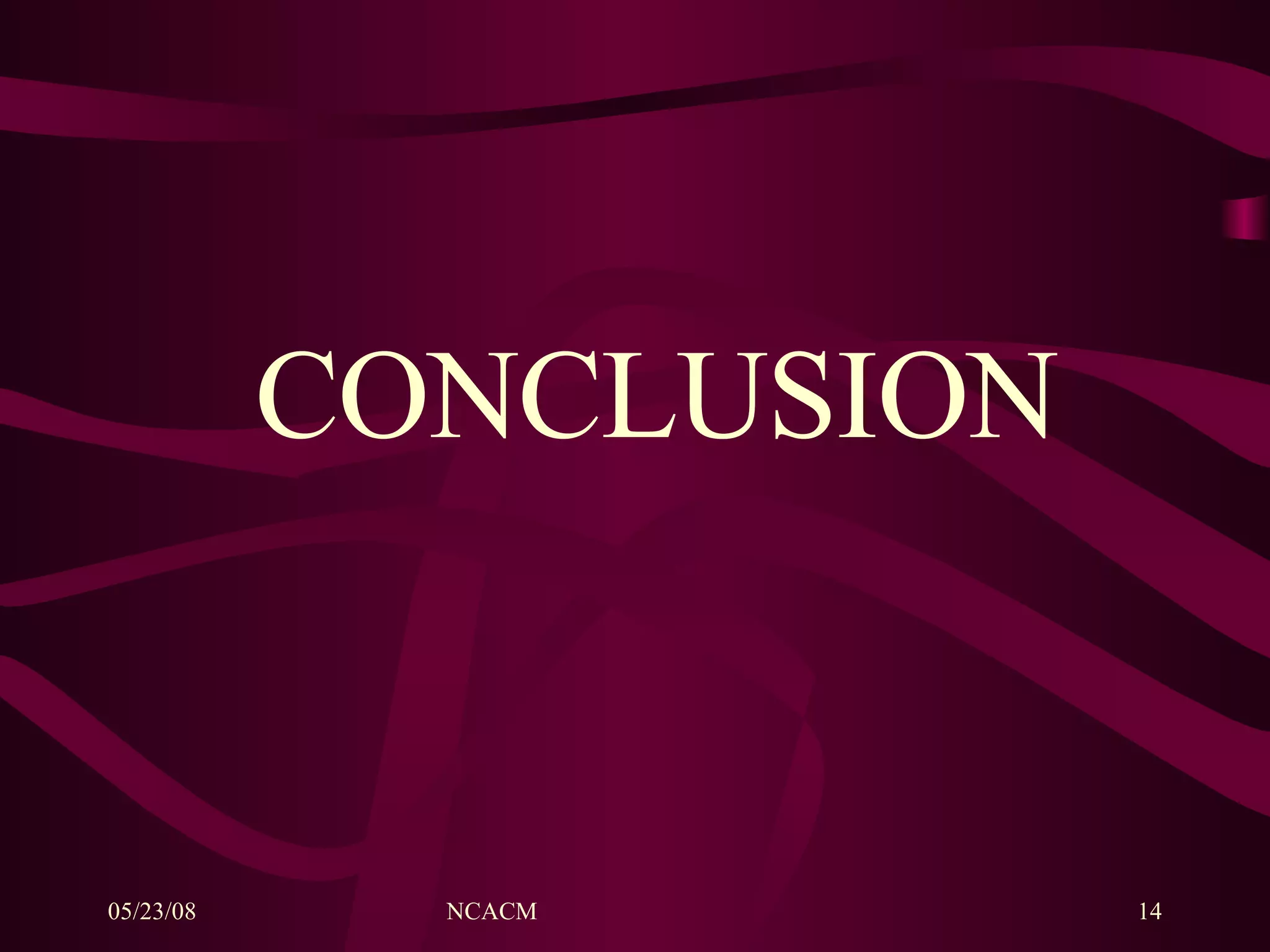The document discusses key concepts in object-oriented programming including objects, classes, messages, and requirements for object-oriented languages. An object is a bundle of related variables and methods that can model real-world things. A class defines common variables and methods for objects of a certain kind. Objects communicate by sending messages to each other specifying a method name and parameters. For a language to be object-oriented, it must support encapsulation, inheritance, and dynamic binding.
